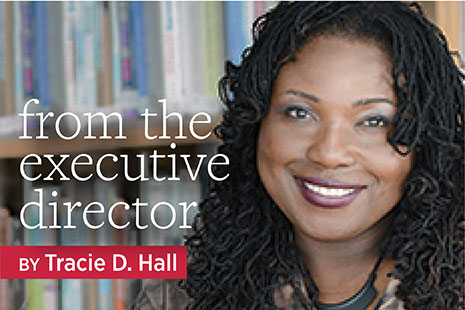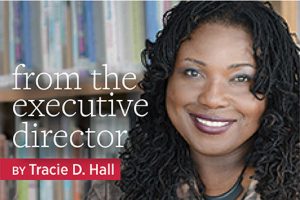
Long after leaving my post as community librarian—the term preferred over branch manager—at Hartford (Conn.) Public Library’s Albany branch, I would get updates from my former staff about patrons in the predominantly Black, Latinx, and Caribbean working-class neighborhood.
Usually the calls were about the kids who frequented the library—which ones had graduated, who was off to college or the military, and sometimes, sadly, who had been shot or killed, or gone to jail.
One call still haunts me: A teenage boy I knew well was facing serious time in a juvenile detention center. My heart sank as I recalled the wiry-framed young man, who was prone to frequent angry outbursts. We often had to intervene when he menaced peers. Yet I recall how riveted he was by an after-school program on making papier-mâché masks. Though several years older than the other kids, the young man’s eyes sparkled when I asked if he wanted to create one too. He shook his head no and quickly walked away.
When he started coming to the library during school hours, we found out he had been expelled. We had to be strict about truancy in general, but my staff and I agreed that we’d rather he be in the library than out on the street. Yet without other kids to interact with, he seemed lost.
He hastily left the library one day after receiving a warning for repeatedly disrupting a program. As the doors closed behind him, I promised myself I would find a way to get through to him the next time I saw him.
There was no next time. By the time I heard his name again, he was facing time in juvenile detention for assault.
When I was young, my mother would label any incident that was worse than horrible “a hurting thing.” A family losing their house to a fire was a hurting thing. Hearing news of this young man’s impending incarceration before reaching adulthood was a hurting thing. Even today, I replay our last conversation. Knowing what I know now about the school-to-prison pipeline, what might I have done differently?
Of the 90,400 public K–12 schools in the United States, only 62% have full-time librarians. That’s despite the dozens of studies that show students in schools with well-equipped libraries and certified school librarians demonstrate stronger academic performance and school persistence. By contrast, almost 71% of public high schools have sworn law enforcement officers carrying firearms.
Students in communities that are lower income and predominately Black, Indigenous, and people of color not only attend disparately resourced schools but also receive harsher, more punitive treatment for school policy infractions. This conduit seems almost intractable when factoring research that estimates that 68% of adults in state prisons lack high school diplomas and 70% of all incarcerated adults have limited literacy.
The school-to-prison pipeline represents the degree to which schools have failed students rather than the other way around. If roadblocks to literacy and school retention rates are at the heart of America’s early and over-incarceration, and if staffed school libraries and access to public libraries are an antidote, why not preemptively transfer more Department of Justice funding to libraries where it can do the greatest good?
Let’s design services and recruit and train library workers to intentionally shut down the pipeline, or at least stem its flow. By doing our part, we can help end the cycle of hurt.

